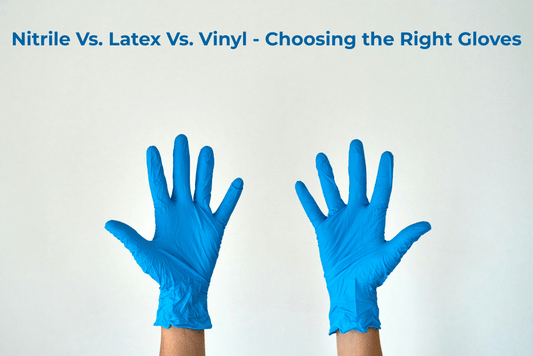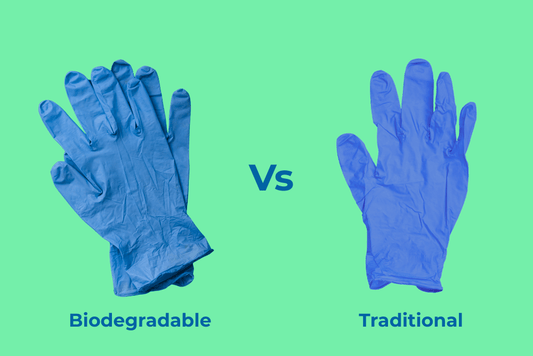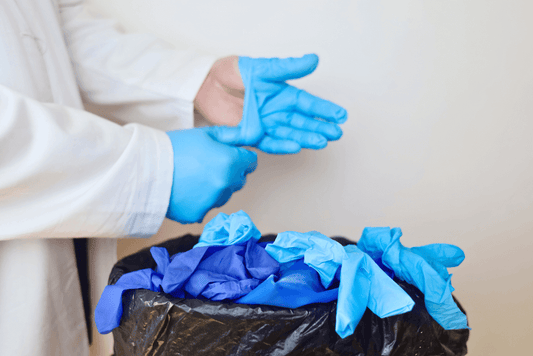How Can You Meet FDA Standards For Food Safety With Biodegradable Gloves?
Food safety remains one of the most regulated aspects of production and handling. Every stage, from processing to packaging, must align with FDA requirements. Protective gloves are an integral part of this framework. They safeguard against contamination and protect both workers and consumers. As sustainability goals gain momentum, biodegradable gloves are emerging as an option. But can these alternatives comply with FDA food-contact standards?
This article examines the conditions biodegradable gloves must meet, how they compare with conventional materials, and the practices businesses should adopt to remain compliant while reducing environmental impact.
Understanding FDA Standards for Gloves
The FDA regulates gloves under its food-contact requirements. The purpose is straightforward: gloves should not transfer harmful substances to food. Materials must be safe for direct or indirect contact. Manufacturing processes must maintain consistent quality.
Key points include:
-
Gloves must be manufactured from substances approved for food contact.
-
They should resist tearing and prevent leaks.
-
Surface residues must not transfer into food.
-
Storage and handling should maintain glove integrity.
These requirements are applied equally to traditional nitrile, latex, vinyl, or newer biodegradable variants. Any glove used in a food setting must be tested and verified.
Biodegradable Gloves in the Food Industry
Biodegradable gloves are developed to break down more quickly under certain conditions compared to conventional disposables. They are often based on modified nitrile or plant-derived polymers. The intention is to lower the waste burden without reducing functionality.
For food safety, however, biodegradability alone is not enough. Gloves must perform the same protective role as standard products. They must provide strength, barrier protection, and resistance to oils or water, depending on the food type. Only then can they align with FDA expectations.
Material Composition and Safety Testing
The first step in achieving compliance is material approval. Every ingredient in a biodegradable glove must be verified for food-contact safety. Manufacturers submit formulations for review, and testing is conducted to check for migration of chemicals.
Mechanical properties are also tested. This includes tensile strength, elongation, puncture resistance, and barrier effectiveness. A glove that degrades too quickly or weakens during use would not be acceptable for food handling.
Biodegradable formulations must therefore balance environmental goals with durability. A glove that is safe in a landfill but unreliable on a production line does not meet industry requirements.
Comparing Biodegradable and Conventional Gloves For Food Safety
Traditional nitrile gloves are well established in food processing. They are resistant to oils, chemicals, and tearing. Vinyl gloves are more economical but offer lower barrier protection. Latex gloves provide flexibility but carry allergy risks.
Biodegradable gloves attempt to match nitrile performance while reducing disposal impact. Many newer models demonstrate strong durability during use, only beginning to break down when placed in anaerobic landfill conditions.
Comparisons show progress, but not every biodegradable glove reaches the same standard. Businesses must assess products carefully. Testing certification from independent labs is a necessary step before introducing them in food-handling environments.
Storage and Shelf Life Considerations
FDA compliance also depends on maintaining product integrity before use. Gloves must be stored properly to prevent degradation. Temperature, humidity, and packaging design all influence shelf life.
Biodegradable gloves may have shorter shelf lives compared to traditional options. This factor must be considered in procurement and inventory management. Expired gloves should not be used in food preparation as performance can decline.
Worker Training and Handling Practices
Even the highest-quality glove fails if used incorrectly. Food handlers must be trained in proper glove use, including:
-
Wash your hands before putting on gloves.
-
Replace gloves after touching non-food surfaces.
-
Changing gloves between raw and cooked food handling.
-
Disposing of used gloves appropriately.
Training programs must highlight these practices as part of FDA compliance. Biodegradable gloves should be incorporated into the same standards without exception.
Waste Management with Biodegradable Gloves
The environmental advantage of biodegradable gloves becomes relevant at the disposal stage. Many will degrade faster in a landfill compared to traditional nitrile or vinyl. This can reduce long-term waste accumulation.
However, the breakdown process depends on conditions. Gloves disposed of in controlled industrial composting environments may degrade faster than in an ordinary landfill. Businesses should confirm the disposal route available in their region.
From a compliance perspective, the FDA does not regulate the end-of-life stage. Yet sustainability reporting and corporate responsibility initiatives often highlight waste diversion. Biodegradable gloves fit into these strategies while maintaining compliance.
FDA-Approved Testing and Certification
Before a glove enters the market, testing must confirm compliance. Manufacturers often pursue FDA 21 CFR Part 177 approvals, which specify allowable substances for food-contact applications.
Testing focuses on migration limits, chemical composition, and durability. Certificates of compliance are issued by the manufacturer and should be available to buyers. Businesses handling food must request this documentation to prove due diligence.
Without certified approval, biodegradable gloves cannot be introduced into a regulated food-handling environment.
Practical Adoption in Food Businesses
Introducing biodegradable gloves into a food operation requires a structured approach. Steps may include:
-
Reviewing supplier certifications and FDA compliance records.
-
Running pilot tests within specific departments.
-
Training workers on correct use and disposal practices.
-
Monitoring glove performance in real conditions.
-
Updating procurement policies to align with both safety and sustainability goals.
This structured rollout reduces risk and helps confirm that biodegradable gloves meet both performance and regulatory expectations.
Industry Movement Toward Sustainable PPE
Food companies are under growing pressure to reduce their environmental footprint. Disposable PPE is part of this challenge. Biodegradable gloves provide a route to sustainability without compromising safety, provided compliance is verified.
Some large-scale distributors are now offering biodegradable glove lines tested for FDA compliance. Industry collaboration between glove manufacturers, recycling providers, and food businesses is expanding access to safer, sustainable options.
Policy direction also plays a role. Governments and regulatory agencies are promoting reduced single-use waste. Businesses adopting biodegradable gloves early may benefit from being ahead of future mandates.
Limitations and Future Development
Not all biodegradable gloves meet FDA standards today. Variations in formulation and manufacturing quality create differences in performance. Some products may claim biodegradability but lack formal testing. Others may degrade under laboratory conditions but not in a landfill.
Further innovation is underway to improve formulations and expand availability. Manufacturers are refining polymers to balance strength with biodegradability. As demand increases, testing protocols are expected to become more standardized.
The future of biodegradable gloves in food safety will rely on both technological progress and regulatory clarity.
The Role of Consumers and Businesses
Consumers influence change by supporting companies that adopt sustainable practices. Food businesses respond by aligning safety with responsibility. Choosing FDA-compliant biodegradable gloves allows companies to meet customer expectations while remaining safe and compliant.
Education plays a role here, too. Clear communication about the benefits and proper disposal of biodegradable gloves builds confidence among workers and consumers alike.
Meeting FDA standards for food safety with biodegradable gloves is possible, but only with verified products. Compliance requires approved materials, consistent performance, and documented testing. Businesses must evaluate suppliers carefully, train workers effectively, and manage disposal responsibly.
The industry is moving forward. As technology advances, biodegradable gloves will increasingly match the durability of nitrile and latex, while offering a more sustainable disposal pathway. With cooperation across supply chains, food safety and environmental goals can progress together.
Upgrade your operation confidently! Our FDA-compliant biodegradable nitrile gloves deliver the protection and assurance you need to meet the highest food safety standards, all while providing a simple, positive step toward sustainability. Contact our sales team immediately for verified product certifications and bulk pricing: Call +44 7482 212945 or visit our contact page.








